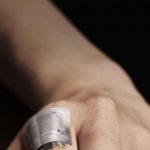 Wearable devices have become increasingly potent in the past year, not least in the new wave of smart fabrics and sensors that are capable of monitoring for a wide range of metrics. A good example of the progress being made comes from Japan, where a team of scientists have developed a hypoallergenic sensor that can comfortably be worn on the skin.
Wearable devices have become increasingly potent in the past year, not least in the new wave of smart fabrics and sensors that are capable of monitoring for a wide range of metrics. A good example of the progress being made comes from Japan, where a team of scientists have developed a hypoallergenic sensor that can comfortably be worn on the skin.
The team, who documented their work in a recently published paper, built an elastic electrode made of breathable nanoscale meshes that they believe paves the way for wearable monitors to track our health over a prolonged period of time.
Vital signs
The market for wearable devices to track heart rate and various other vital signs have come a long way in recent years. The latest have begun to deploy lightweight, elastic materials that can attach themselves directly to the skin, and therefore provide more precise measurements.
Whilst existing films and rubber sheets do a great job of sticking to the skin, they often lack breathability, which renders them unsuitable, and indeed unsafe, for long-term use. The fabrics have been shown to block sweating and airflow around the skin, which in turn causes irritation and inflammation.
“We learned that devices that can be worn for a week or longer for continuous monitoring were needed for practical use in medical and sports applications,” the team say.
The latest product was constructed using an electrode made from nanoscale meshes. The meshes themselves contained a water-soluble polymer and a gold layer. Both materials were chosen due to their biological compatibility with the human body. The device itself is applied by spraying a tiny amount of water, which in turn dissolves the nanofibers and allows the device to stick to the skin. It’s construction allows for seamless fit to the skin.
The device was then put through its paces on 20 test subjects, who were required to wear the device for a week. They all report no inflammation of the skin, whilst the permeability of the nanomesh also performed well. What’s more, it also stuck to the body through a full range of bends and stretches by the test subjects, and the electromyogram recordings were of a comparable quality to more traditional gel electrodes.
“It will become possible to monitor patients’ vital signs without causing any stress or discomfort,” the team say.
They envisage it eventually being used both in traditional healthcare environments, but also in athletics to monitor the health of sportsmen and women without impeding their training. Whilst it is undoubtedly at an early stage, it will be a fascinating project to follow.